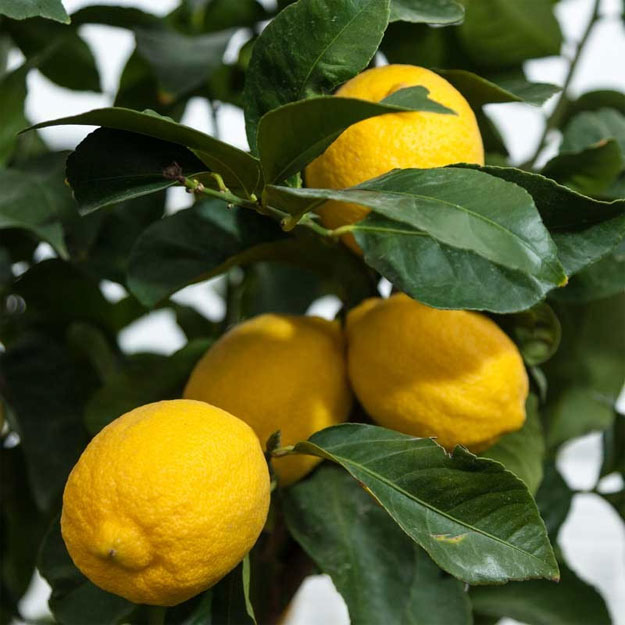This will be a useful post to reference when inspecting all types of citrus. All citrus, while growing is subject to sunburn, as the direct sunlight, and heat, may at times cause sunburn to develop.

Sunburn will be found on lemons (or other citrus fruit) growing on the outside of the tree, facing the west or southwest. Most of the times the citrus survives just fine, with no problems from the sun. Leaves will offer protection, but if an exposed lemon is subject to the extreme heat some external indications are usually detected, and will be culled out during the packing process.
When you receive lemons you don’t have the luxury of examining closely those fruit that were growing on the outside of the trees. But you do have a few indicators to use, to detect sunburn. In mild cases of sunburn the surface will be affected, but the flesh will be just fine. The surface may show a darker yellow or golden yellow to brown discoloration. The surface may show a flattened area. The USDA does have a scoring guideline if you find sunburn on lemons, affecting the surface only. Score as damage when the sunburn causes appreciable flattening of the fruit, drying of the skin, material change in the color of the skin or affects more than 25 percent of the fruit surface. Reading over this scoring guideline one has to wonder if the USDA even read what they write, as this doesn’t seem to make much sense at all. I agree, the lemon should be scored as a defect whenever the sunburn causes appreciable flattening of the fruit, drying of the skin and a material change in the color of the skin (golden brown to brown). But the second part of the scoring guideline only adds confusion, when it states, score the lemon as a defect by sunburn when affecting more than 25% of the fruit surface. So, should you score sunburn whenever you find if drying the skin, or a material change in color, or when it affects more than 25% of its surface? Most of the USDA inspectors I have worked with ignore the 25% surface guideline and will use their judgement is determining if the sunburn drys the skin or has a material change in color.
But I won’t let the USDA off the hook yet. The scoring guideline appears to be written by someone who has never been out of the office and actually seen sunburn on a a lemon or any type of citrus. Anyone who has encountered sunburn will quickly feel the defect, before seeing a flattened, dry or discolored area. The sunburn area may show a darker yellow or golden brown discolored area affecting one side of the lemon, the side of the lemon that was facing the sun. But you will feel a hard spot when you touch the lemon. This hard spot will be readily noticeable when compared to other sides of the lemon Rarely will the lemon be scored as a defect until you cut into the flesh to determine the extent of the sunburn.

Cutting the lemon, lengthwise, just into the flesh, below the hardened area you will find the flesh being dried out, papery in appearance. The USDA does state if you find the flesh to be appreciably affected, score the lemon as a defect. “Appreciably affected?” What does that mean? Of course the USDA fails to define what they mean, but every inspector I know will score the lemon as a defect whenever the fruit is affected, a free from defect. Hopefully someone from the USDA, who may have actually inspected lemons, will clean up their scoring guideline for this defect. As sad as it is, the inspection instructions go on and state for the inspectors to follow the cutting procedures used when finding tree dryness from freezing, which states to cut the lemon at the stem end, in 1/4 inch slices, apparently believing the sunburn affects the stem end of the lemon first.
If you encounter sunburn, and the area affected is hard, with a slight discoloration, cut into the flesh to look for damage to the flesh. If the flesh is affected, score the lemon as a defect. The lemon shown here would be scored as serious damage, as the dryness from the sunburn is seriously affecting the edible quality of the lemon.

No Comments on “Lemons- Sunburn”